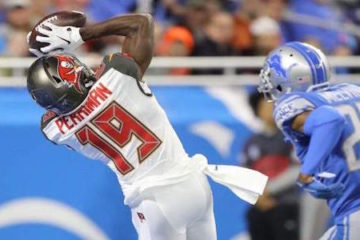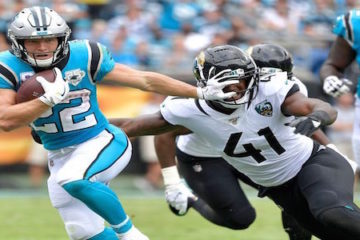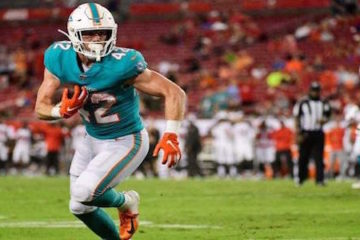2012 Fantasy Baseball: Sell High On Melky Cabrera, Keep Buying R.A. Dickey
After seeing my column inspire Miguel Montero to hit a few home-runs, and injuring Alexi Ogando, I thought it would be a good idea to check how the players that have been highlighted have performed since being honored by this column.
Quick little disclaimer: I know these are small-sample sizes, it is just a fun little competition I am making for myself.
5/31 Miguel Montero: Since being highlighted as someone to buy low on, Miguel has hit .241 with 3 home-runs and 9 RBIs. Although the batting average has been poor, the power that I predicted to come back seems to be at least peeking through. I’ll give myself a pass for this one.
5/31 Chris Capuano: I highlighted Capuano as someone who should be sold high upon, and since me saying that, he has posted a pretty mediocre line. Capuano has pitched 15.1 innings, while striking out 10 and walking 9, and pitching to the tune of a 5.87 ERA. So far I look right about Capuano.
6/8 Neftali Feliz: I posted him as someone to sell high on, but he has been injured since the article was written. I am going to call this one a “walk,” and just not count it either way.
6/8 Alexi Ogando: In his one start, he pitched three innings and retired every batter he saw, while striking out two. The problem? He was injured, and landed on the DL. My first incorrect call so far.
Spencer Schneier Correctness Average through 6/15= .667.
For those of you that just scrolled down because you wanted the fantasy advice, here is the good part.
Keep Buying: RA Dickey
Although the word may be out on Dickey, he is still a candidate that one should look to buy on not only in a one-year league, but in keeper leagues as well.
Pitchers are scary, they tend to be wildly unpredictable, and not always the safest bet for fantasy owners. The one thing that separates Dickey from most pitchers is that he is a knuckleballer, a different breed than your run-of-the-mill fastball/curveball/change-up pitcher. The injury-risk for a knuckleball-specialist is significantly lower than that of a normal pitcher, because the pitch does not put as much stress on the arm.
The most recent knuckleball thrower, Tim Wakefield, was never a pitcher who had too much fantasy value. This observation would lead the average fantasy player to lump Dickey in with Wakefield as a guy that can not sustain fantasy value.
The difference between Dickey and Wakefield is the K/9. RA Dickey currently is sporting an 8.67 K/9 rate. This puts him ahead of fantasy standouts James Shields, Matt Cain, and Felix Hernandez. Why should someone believe that Dickey can sustain this, when Wakefield’s career high in K/9 is 7.9?
I present two reasons, one of which is pitch variety. Looking at the Pitch F/x charts below (hat tip as always to the excellent Brooksbaseball.net), one can see that Dickey mixes in different velocities and degrees of movement. This added edge confuses hitters enough for Dickey to be able to strike them out at a higher rate. Dickey has really been able to fool hitters this season, as he has posted a swinging-strike rate of 11.9%, which is tied with Jeff Samardzija for third best in baseball.
DISPLAY CHARTS
Dickey- http://cdn.brooksbaseball.net/player_cards/card_imgs/285079.H.S.A.S.png
Wakefield- http://cdn.brooksbaseball.net/player_cards/card_imgs/123801.H.S.A.S.png
The second reason for Dickey’s dominance being sustainable is control. A pitcher can have as much movement and velocity on a pitch as they want, but it doesn’t matter if they can’t locate it (looking at you, Mr. Darvish). Dickey locates his pitches particularly well, and doesn’t walk batters too often. He is among the best in baseball this season with 2.11 BB/9, and is tied with Bartolo Colon for the highest percentage of pitches thrown in the strike-zone this season (53.6%).
Even though he probably will not be able to continue at this rate, there is no reason why RA Dickey should be able to continue as a really valuable fantasy option for this year, and beyond that.
Sell High: Melky Cabrera
One of the decent surprises for fantasy owners this year has been the production of Melky Cabrera. After he was acquired from Kansas City for Jonathan Sanchez, Cabrera was plugged into the San Francisco outfield with hopes that he could tap into some of that potential he has.
So far this year that move is looking like a wild success, as he has provided immense value to fantasy teams everywhere this year. His seasons stats are as follows: .366 AVG, 10 SB, 44 RBI, and a .935 OPS.
Is Cabrera’s play this season legitimate? Or is he due for some regression?
The answer is probably somewhere in-between.
The lazy answer would be to point to his .408 BABIP and predict regression, but if one looks deeper into the numbers they see more alarming trends than that. This season, Melky has started hitting ground balls at a higher rate (54.9%), than ever before (career rate of 49.2%). The higher amount of ground balls has come at the expense of fly-balls, as his 23.9% rate this year is significantly lower than his career rate of 31.3%.
Looking at Cabrera’s ZiPS rest-of-season projections, they have him down to basically hit at his pace from last season, which is a .303 AVG, 8 HR, and 11 SB). If I had to project Melky for the rest of the year, I would probably expect a much lower batting average, and more stolen bases. I say this because I am not a big believer in guys that hit more than half their batted balls on the ground, and I do not think that ZiPS is accounting for that and properly regressing his BABIP.
To wrap it up: Melky Cabrera is nowhere near this good a hitter, and should not be relied on for any fantasy team. I would sell high now, and try and bring back some valuable parts.
Written by Spencer Schneier, exclusively for TheFantasyFix.com. For more great fantasy baseball advice, give Spencer a follow on Twitter @BaseballSpencer.
(May 31, 2012 – Source: Thearon W. Henderson/Getty Images North America)






